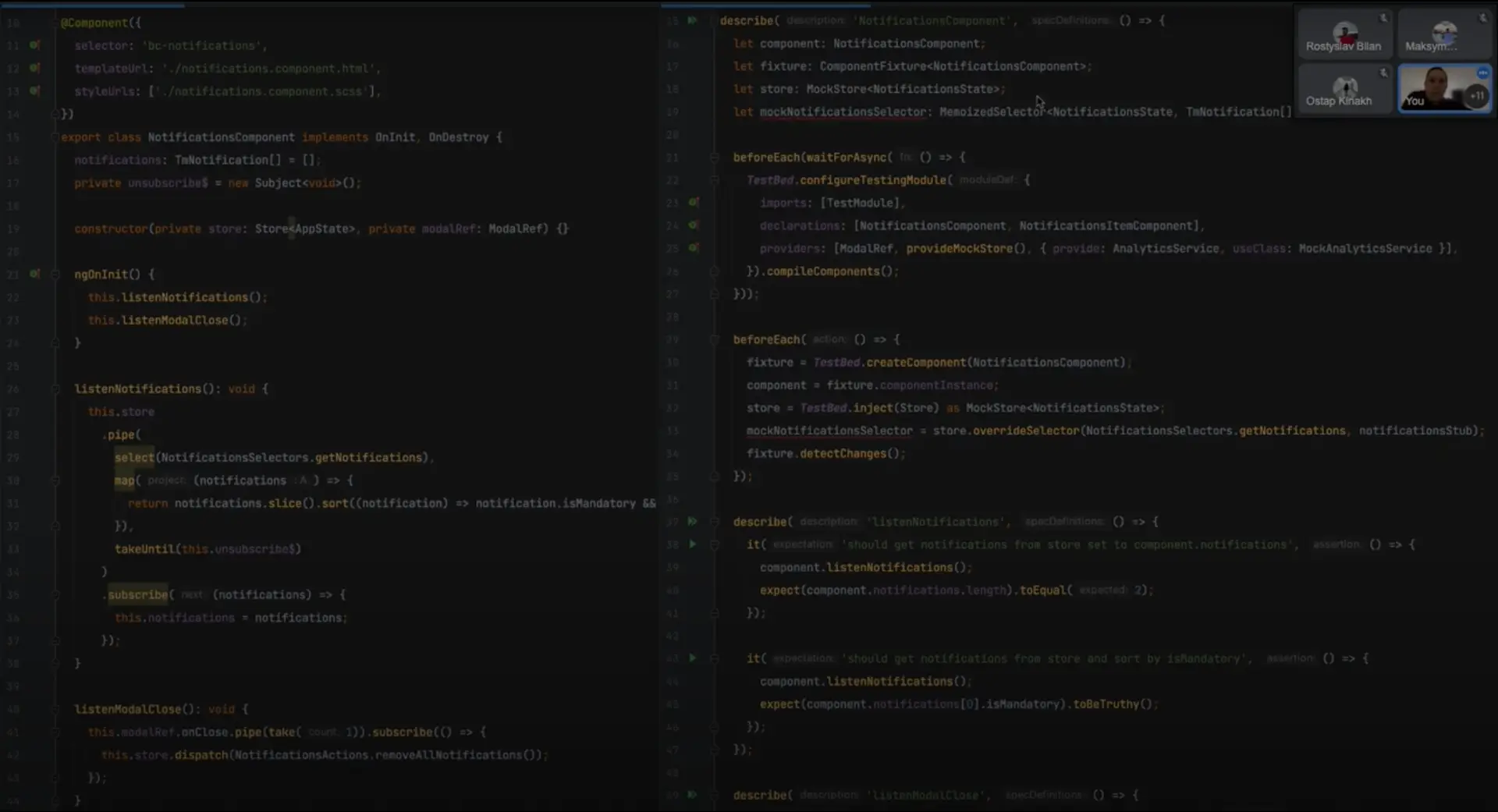Motivation
The development of Web Applications can be compared to building a beautiful and intricate sculpture. Each piece must fit together perfectly, and the overall structure should be solid and stable. Now, think of your frontend code as this sculpture and your tests as the quality checks that ensure every piece is in its right place and the whole structure stands strong.
Testing in front-end development is crucial for this process and the result.
Here are the vital reasons why we need to take care of Testing in Frontend:
- Confidence: Having a suite of passing tests gives developers and teams confidence that their changes are unlikely to introduce critical issues. This confidence encourages faster development and iteration cycles.
- Regression Prevention: As your application grows, changes in one part of the codebase can unintentionally break functionality in other parts. Automated tests catch these regressions early, preventing new changes from disrupting existing features.
- Cost-Effectiveness: While writing tests requires an upfront investment of time, it can save a lot of time and resources in the long run. Catching and fixing bugs early is significantly cheaper than addressing them after they've made it into production.
- Issues Detection: Frontend testing helps identify and fix issues, glitches, and unexpected behavior in your application's user interface. This ensures that your application works as intended and provides a smooth user experience.
- Code Quality: Writing tests often leads to writing cleaner and more maintainable code. Tests force developers to consider edge cases, which can lead to better code design and improved overall quality.
- Code Refactoring: Regular testing makes it safer to refactor or modify your front-end code. As long as your tests continue to pass after changes, you can be reasonably confident that you haven't introduced new issues.
- Collaboration: Automated tests facilitate collaboration among front-end developers, designers, and even stakeholders. They provide a clear definition of how specific features or components should behave, reducing misunderstandings.
- Continuous Integration and Deployment (CI/CD): Automated front-end tests are integral to a CI/CD pipeline. They ensure that new code changes won't be deployed if they break existing functionality, maintaining the stability of your application.
Levels of testing
Unit testing
Unit tests are typically automated tests written and run by software developers to ensure that a section of an application (known as the "unit") meets its design and behaves as intended. In other words, it is testing individual, isolated code units to ensure they function correctly. These units are typically the most minor testable parts of your application, such as functions, methods, or classes. The purpose of unit testing is to validate that each unit of code behaves as expected and produces the desired output for a given input.
Pros and Cons
| Pros (+) | Cons (-) |
|
|
The most common and popular Unit testing Frameworks and Libraries
- Angular
- React
- Vue
Integration testing
Integration testing is the phase in software testing in which individual software modules are combined and tested as a group. Integration testing evaluates how different units of code interact when combined. It verifies the interoperability, data sharing, and functional compliance of integrated modules. Integration tests are crucial for identifying issues that might arise when components are integrated into a larger system.
End-to-End testing
End-to-end testing refers to a software testing method that involves testing an application's workflow from beginning to end. This type of testing verifies the entire application's flow by simulating user interactions across multiple components and pages. It ensures that the application behaves as expected from the user's perspective and is particularly useful for catching integration issues and user experience glitches.
The most common and popular end-to-end Frameworks
- Cypress - fast, easy, and reliable testing for anything that runs in a browser. Main features: time travel, real-time reloads, debuggability, automatic waiting, spies, stubs, and clocks, network traffic control, consistent results, screenshots, and videos.
- Playwright - cross-browser, cross-language automation framework. No flaky tests, complete isolation, fast execution, and powerful tooling. Configure test retry strategy, capture execution trace, videos, and screenshots to eliminate flakes.
- TestCafe - does not require WebDriver or other testing software. It runs on Node.js and uses the browsers you already have. Сan visually records automated test scripts. Code-free tests lower the learning curve and improve productivity.
- Nightwatch - is an integrated, easy-to-use End-to-End testing solution for web applications and websites, written in Node.js. It uses the W3C WebDriver API to drive browsers and perform commands and assertions on DOM elements.
Summary
Frontend testing offers numerous benefits, including bug detection, enhanced user experience, code quality improvement, collaboration facilitation, and support for continuous integration and deployment (CI/CD) pipelines. By catching issues early, preventing regressions, and providing a stable foundation for development, frontend testing contributes to the creation of robust, user-friendly, and reliable web applications.
What Framework or library to choose depends on the Application framework, technology stack, Team composition, experience and other aspects.

